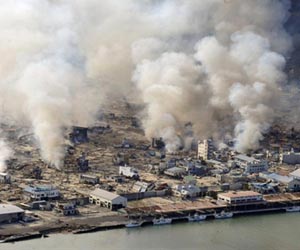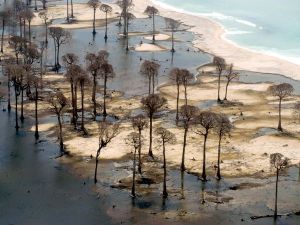One of the most significant years in numerology is the year 2012
A.D. That is because that is the date that the Mayans predicted
that the world would end.
A.D. That is because that is the date that the Mayans predicted
that the world would end.
Even people who do not know a lot about Mayan astrology have heard
this theory that the year 2012 will bring the apocalypse. It is
supposed to end on December 21st at 11:11 am. This is a date that
has always significant to theorists, physicist, astrologers,
historians and numerologists as the year signifies the end of the
thirteen cycle that make up what is known as the Mayan Long Count
Calendar.
this theory that the year 2012 will bring the apocalypse. It is
supposed to end on December 21st at 11:11 am. This is a date that
has always significant to theorists, physicist, astrologers,
historians and numerologists as the year signifies the end of the
thirteen cycle that make up what is known as the Mayan Long Count
Calendar.
The Mayan Calendar contains both components of astrology and
numerology. The people that belonged to this ancient civilization
of Central America were adept pampers and trackers of the heavens.
The massive temples that were built by this early civilization were
not just tombs or places to worship the Gods. They were also built
to be giant observatories of the heavens.
numerology. The people that belonged to this ancient civilization
of Central America were adept pampers and trackers of the heavens.
The massive temples that were built by this early civilization were
not just tombs or places to worship the Gods. They were also built
to be giant observatories of the heavens.
These temples were architecturally designed so that the movements
of the planets, the sun, the moon and the stars could be tracked.
of the planets, the sun, the moon and the stars could be tracked.
The majestic structures that the ancient Mayans built were not just
places of worship. They were centers of astronomic studies that
also did dual duty as temples of worship. Some temples even had
cut-outs in their stones in the shapes of snakes. As the sun would
raise, these cut out shapes would cast lengthening shadows in the
shape of snakes down the temple steps. From a distance it would
seem that a real snake was slithering down the steps. When the
snake shadow lengthened so that it reached the bottom of the steps
it marked a day. One whole day in the Mayan calendar was called a
Kin.
places of worship. They were centers of astronomic studies that
also did dual duty as temples of worship. Some temples even had
cut-outs in their stones in the shapes of snakes. As the sun would
raise, these cut out shapes would cast lengthening shadows in the
shape of snakes down the temple steps. From a distance it would
seem that a real snake was slithering down the steps. When the
snake shadow lengthened so that it reached the bottom of the steps
it marked a day. One whole day in the Mayan calendar was called a
Kin.
Many ancient civilizations in Africa and the Far East developed
calendars based on a 20 unit mathematical system and coincidentally
so did the Mayan civilization.
calendars based on a 20 unit mathematical system and coincidentally
so did the Mayan civilization.
In essence the Long Count system nested cycles of days based on the
number 20. Every unit of time in the calendar was based somehow
out of that unit of 20.
number 20. Every unit of time in the calendar was based somehow
out of that unit of 20.
Twenty days was called a Uinal. 7200 days was called a Katun and
144,000 days was called a Baktun. The Mayan year consisted of 360
days and was called a Tun. This calendar was a little shorter than
ours in terms of year length because it was only 360 days. Those
360 days were in turn divided into units of twenty days.
144,000 days was called a Baktun. The Mayan year consisted of 360
days and was called a Tun. This calendar was a little shorter than
ours in terms of year length because it was only 360 days. Those
360 days were in turn divided into units of twenty days.
The reason that ancient Mayan year was a little bit shorter than
our current calendar of 365 years is that it was based on the
astral cycles of Venus. The ancient Mayans knew that whenever this
shining celestial body was close to the earth that it seemed to
bring good times. Of course today we would note this knowing that
the planet Venus is associated in astrology with love and
blessings. The planet Venus also has cycles that are the equivalent
in length to the number twenty.
our current calendar of 365 years is that it was based on the
astral cycles of Venus. The ancient Mayans knew that whenever this
shining celestial body was close to the earth that it seemed to
bring good times. Of course today we would note this knowing that
the planet Venus is associated in astrology with love and
blessings. The planet Venus also has cycles that are the equivalent
in length to the number twenty.
This Long Count system of measuring time was first put into
practice by the Mayans around 32 B.C. The reason that it was
called The Long Count is because the Mayans, who were quite dark
spiritually, believed that the end of the world must happen. In
fact it was something to look forward to, because life was believed
tobe easier after that.
practice by the Mayans around 32 B.C. The reason that it was
called The Long Count is because the Mayans, who were quite dark
spiritually, believed that the end of the world must happen. In
fact it was something to look forward to, because life was believed
tobe easier after that.
In essence the Mayan Long Count is the countdown to the eventual
and unavoidable apocalypse that would bring the end of the world.
The high priests and shamans in the Mayan culture figured out that
the Long Count which is supposed to equal 5125.36 days.
and unavoidable apocalypse that would bring the end of the world.
The high priests and shamans in the Mayan culture figured out that
the Long Count which is supposed to equal 5125.36 days.
This number of days is also known as the Mayan Great Cycle. This
passage of time ends exactly on the winter solstice. Amazingly the
Mayan mathematicians were able to pinpoint the exact day and time
that the world will end in the future and that is on December 21st
2012. Just as a matter of interest they also believed that the
world was conceived on August 13th.
passage of time ends exactly on the winter solstice. Amazingly the
Mayan mathematicians were able to pinpoint the exact day and time
that the world will end in the future and that is on December 21st
2012. Just as a matter of interest they also believed that the
world was conceived on August 13th.
There is actual astrological and astronomical data to back up the
theory of the Mayan Long Count, and there are things happening in
the sky that day that could potentially bring the end of the world!
theory of the Mayan Long Count, and there are things happening in
the sky that day that could potentially bring the end of the world!
Astrologically this date is important as this marks the date when
the Sun is going to cross what is astronomically known as the Milky
Way Equator. The Mayans were absolutely incredible mathematicians
and they could predict centuries into the future when it came to
predicting the trajectory of the Sun.
the Sun is going to cross what is astronomically known as the Milky
Way Equator. The Mayans were absolutely incredible mathematicians
and they could predict centuries into the future when it came to
predicting the trajectory of the Sun.
Further here is a lot of imagery representing the Milky Way in
works of art done by the Mayans. The sea of stars of the Milky Way
is essential to the Mayan myth of the Sacred Tree.
works of art done by the Mayans. The sea of stars of the Milky Way
is essential to the Mayan myth of the Sacred Tree.
In many of these drawings the sun is symbolized as a canoe
that carries Mayan deities across the sky. In many drawings on
temple walls there is a progressive series of images that shows the
end of the world as symbolized by the canoe sinking into the Milky
Way. Astrologically the crossing of the sun over the Milky Way
equator scheduled to happen at exactly 11:11 a.m GMT on December
21st in the year 2012.
that carries Mayan deities across the sky. In many drawings on
temple walls there is a progressive series of images that shows the
end of the world as symbolized by the canoe sinking into the Milky
Way. Astrologically the crossing of the sun over the Milky Way
equator scheduled to happen at exactly 11:11 a.m GMT on December
21st in the year 2012.
This type of astrological event is unheard of as the sun will
technically be in what is known as the “dark rift” of the Milky Way
and oddly will also be in conjunction with the exact center of the
universe.
technically be in what is known as the “dark rift” of the Milky Way
and oddly will also be in conjunction with the exact center of the
universe.
Many visionaries and metaphysicians have noted how important this
date is to the end of the world. One famous analysis called “The
Mayan Prophecies” (authored by Adrian Gilbert and Maurice Cotterill)
have put forth the theory that the sun will reverse its magnetic
field that day. This would be a development that would result in
weather changes and seismic shifts that could cause the end of the
world.
date is to the end of the world. One famous analysis called “The
Mayan Prophecies” (authored by Adrian Gilbert and Maurice Cotterill)
have put forth the theory that the sun will reverse its magnetic
field that day. This would be a development that would result in
weather changes and seismic shifts that could cause the end of the
world.
Of course the end of the world has been predicted many times in
history and it is more likely that the Long Count will signify the
end of one era and a new beginning of consciousness. However it is
quite odd that the number 11:11 — which is apocalyptic in other
religions and cultures — is the same in this system.
history and it is more likely that the Long Count will signify the
end of one era and a new beginning of consciousness. However it is
quite odd that the number 11:11 — which is apocalyptic in other
religions and cultures — is the same in this system.
Every major religion, minor religions you’ve never
heard of, non-religious spiritualists, and even athiests
and agnostics agree in 2012 something will happen.
heard of, non-religious spiritualists, and even athiests
and agnostics agree in 2012 something will happen.
There are millions of people around the world sensing
this big event is coming. But What will happen?
this big event is coming. But What will happen?


